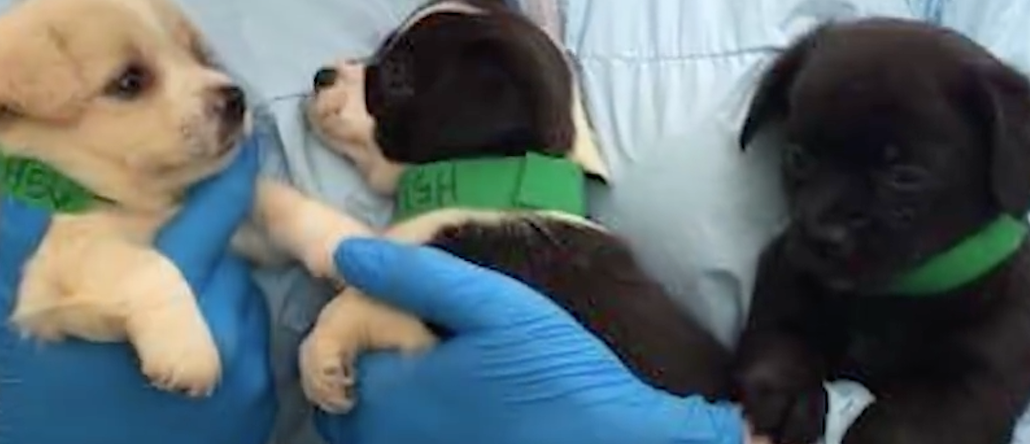
The Dodo is another viral wunderkind.
In just two years, thanks to stories like Chimp Hugs Woman Who Saved Her Life 20 Years Ago, the site founded by Izzie Lerer has 5 million uniques in the U.S., per April comScore (the company puts it at 12 million uniques including its global audience, citing Google Analytics). But the bigger growth story has been on the off-platform video side.
Like many publishers, The Dodo has put its focus on video, where eyeballs and ad dollars are going. Recently, it hit half a billion video views across platforms, up from 100 million six months ago. Today, half the site’s heartwarming animal content takes the form of video, with a plan to get that to 70 percent.
The site isn’t focusing on making money right now, and with dad Ken Lerer (The Huffington Post co-founder and BuzzFeed chairman) as an investor, Izzie doesn’t have to just yet. But for when that day comes, Lerer is thinking about making video that will appeal to advertisers wanting to burnish their animal-friendly image and how to Facebook-proof the site, which now accounts for 90 percent of its 500 million video views. She and YuJung Kim, who joined as president last July from director of global digital media at the NBA, recently discussed the site’s approach to video.
The Dodo knew its animal fare would be social media-friendly from the get-go. So it put its seven-person social team on an equal footing with its 25-person editorial team (including video), rather than have social report to edit, as some other publishers do. As the site tries to diversify beyond Facebook, it’s designated managers for each social platform, since each is so different.
The Dodo is fluent in Facebook, where videos average 2 million views. But Facebook Live, Instagram and Snapchat all demand their own approach. Facebook videos can run 35 seconds, while 10 to 15 seconds is ideal on Instagram and because of their brevity, the Dodo pays close attention to when to insert text. Snapchat has a more playful nature, so the Dodo sticks to lighter fare on its personal Snapchat account.
The Dodo is one of the publishers that’s paid by Facebook to make Facebook Live videos, which has given the Dodo ample opportunity to test and learn. It’s found that 10 minutes is the ideal length, but that time of day doesn’t matter, since while news may be appointment viewing, people are open to watching lighter fare any time of day.
The Dodo’s content may seem to come from the heart, but it’s grounded in data. For the first six weeks of its video push, it examined several variables for each, from how long the opening shot should be to how much text to use to the sequence of the video itself. “The difference could be a matter of millions of views,” Kim said. In the case of animal profiles, for example, it found that more text helped tell the story. Many of those lessons still apply today, though the Dodo is careful not to overuse a popular formula. “We make sure we don’t just optimize to one type; it leads to audience fatigue,” Lerer said.
The Dodo could turn on the clicks if it just pushed out cute animal videos all day. But Lerer believes the site has a better chance of avoiding, uh, extinction if she optimizes to engagement. The team looks for posts that tug on heartstrings. Stories with rescue theme do well, like this one in May on animal-friendly six-pack rings that’s gotten 15 million video views. Validation came in April, when Shareablee ranked the site No. 7 among publishers with 12.5 million actions taken (likes, shares, etc.), ahead of BuzzFeed.
Of course, history has shown the platforms to be a fickle master, and there’s no guarantee that any publisher will continue to be favored by the Facebook formula. For now, the Dodo is banking on its knack for turning out engagement-worthy video. “So far we’ve been on the right side of the algorithm,” Kim said. “For us, it’s riding the wave as long as it makes sense.”
Image courtesy of The Dodo.
More in Media

A timeline of the major deals between publishers and AI tech companies in 2025
Here’s a list of all the major deals signed between publishers and AI tech companies in 2025.

No playbook, just pressure: Publishers eye the rise of agentic browsers
For the bulk of publishers, Google is, as ever, the one to watch. It’s already got agentic features within its Chrome browser, but that’s the tip of the iceberg, some say.

The biggest SEO lessons in 2025 for publishers
KPIs are changing, more AI search data is becoming available, and publishers are looking beyond search to grow their audiences and revenue.





